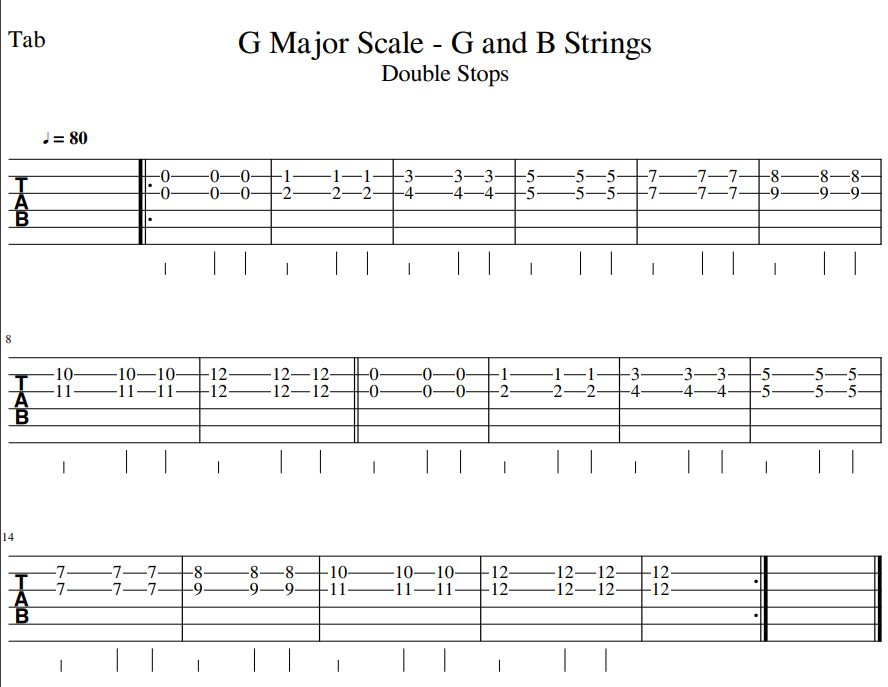Practice Tracks for ZoomGuitar

Playing a "Double Stop" means playing two strings at the same time. In most situations where double stops are used what you are playing is a "3rd": two notes with either 3 or 4 frets between them.
A typical major triad consists of three notes: 1-3-5. As I've alreasdy stated, a typical double stop (not a power chord) is a "3rd". The point of a double stop is to enhance the sound of the melody note by adding another note that harmonizes with it in a pleasing way. That usually means a double stop consists of a combination of the 1 and 3 notes of the major scale.
A Major 3rd consists of a note and another one that is 4 frets higher. A minor 3rd consists of a note and another one that is 3 frets higher. This is called a "flattened 3rd". For example, the major third for the root of the G scale is G and B. The minor third would be G and Bb.
When you move up through a major scale the sequence of major and minor thirds is as follows: M - m - m - M - M - m - m - M. This sequence is the same you would use if you were playing chords for a major scale: M - m - m - M - M - m - m - M. Take the G major scale for example. The chords are GM - Am - Bm- CM - DM - Em - F#m - GM.
Applied to double stops this results in a pattern where the first pair of notes is a Major 3rd, the 2nd and 3rd are minor 3rds, the 4th and 5th are Major, the 6th and 7th are minor, and the 8th is Major.
The easiest string combination to play these pairs of notes on is G and B string combination. On these strings a Major 3rd consists of adjacent notes and a minor 3rd drops back 1 fret on the B string. So you have this pattern:


Go to page 2 of Double Stops Intro
MuzicTrain.com
